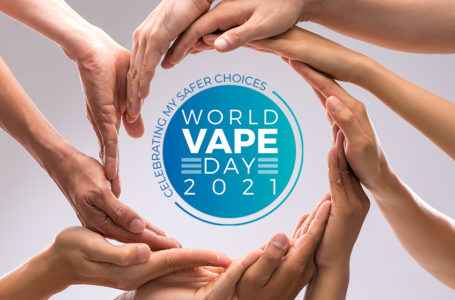A regional civil society group asked the World Health Organization’s (WHO) international treaty on tobacco control which will convene its member states in November 2023 to protect, instead of alienating smokers, by accepting harm reduction strategies that will help them switch to less harmful alternatives such as vapes.
The Coalition of Asia Pacific Tobacco Harm Reduction Advocates (CAPHRA) called on the WHO Framework Convention on Tobacco Control (FCTC) to provide honest, risk-proportionate communication and regulatory recommendations for THR products. “While not perfect, these products can be a less harmful alternative to smoking and can help smokers quit. It is critical that smokers have access to accurate information about these products and that regulations are proportionate to their risks,” it said.
In its report, CAPHRA said that despite the overwhelming scientific evidence supporting vaping products as less harmful alternatives to smoking, the WHO consistently disregarded the positive role that vaping can play in tobacco control. “It is time for the WHO FCTC and its member states to listen to the voice of the sector that they are supposed to fight for and not against—the over 1 billion smokers whose lives are in danger if they continue to smoke,” it said.

“Smokers should have the right to access less harmful alternatives to smoking, and the WHO FCTC should focus on helping them. We need a pragmatic campaign to reduce the harm caused by smoking, rather than a dogmatic, deceptive, ineffective campaign to compel abstinence,” it said.
CAPHRA said the harm reduction approach to tobacco control is supported by several countries, including the United States, the United Kingdom, New Zealand, Canada and the Philippines. Clarisse Virgino, the Philippine representative to CAPHRA, said the report recognizes the rights of smokers to choose better options for themselves.
“Countries such as the Philippines, which recently passed a law to regulate smoke-free alternatives including vapes and heated tobacco, should voice out their official stance on tobacco harm reduction in COP10 and defend the rights of smokers to be protected from the harms of cigarettes,” Virgino said in reaction to the report.
“The Philippines passed the Vape Law in 2022 to provide information and access to less harmful alternatives to cigarettes in the country. The COP10 (10th Conference of the Parties) should take into account that many countries are now moving away from prohibitionist and quit-or-die approach of the WHO-FCTC to help smokers, instead of marginalizing them,” said Virgino.
CAPHRA said the WHO FCTC would present new prohibitionist proposals in COP10 which would go against the stance of countries such as the United States, United Kingdom, New Zealand and Canada which accept tobacco harm reduction strategies.
“We are calling on all member states who will be attending the 10th FCTC Conference of Parties on November 20 to 25 in Panama City to reject prohibitionist proposals contained in COP 10 Provisional Agenda items 6.1 to 6.4 that will just further contribute to millions more of unnecessary deaths from smoking,” CAPHRA) said in the report.
The Asia-Pacific civil society group issued a report which highlights the non-implementation of the WHO’s Framework Convention on Tobacco Control (FCTC) Article 1 (d) on harm reduction strategies.
CAPHRA said the FCTC even proposes new prohibitionist measures such as treating tobacco harm reduction (THR) products, which have been found by numerous scientific studies to be less harmful alternatives to smoking, same as harmful cigarettes.
It said FCTC also promotes treating vaping aerosols as smoke, banning all THR products flavors and open systems, undue restrictions on nicotine salts and nicotine delivery and nicotine content in general and radical progressive tobacco measures that will be extended to novel and emerging tobacco products.
CAPHRA said this direction contradicts THR—a concept enshrined in the FCTC which defines tobacco control as “a range of supply, demand and harm reduction strategies.”
CAPHRA said that a careful review of the 2021 global progress report as well as the previous WHO FCTC biennial progress reports, including the recently published 2023 WHO report on the global tobacco epidemic, show the neglect of tobacco harm reduction, which is required by the FCTC under Article 1 (d) as an essential element of tobacco control.
The WHO said in its latest report that the global tobacco epidemic kills 8.7 million people each year.
CAPHRA said despite the creation of the WHO FCTC 20 years ago, there are still more than a billion people who smoke in the world today – the same as a decade ago – and the direct and indirect costs of smoking-related disease is nearly $2 trillion annually.
“Recent actions by the WHO FCTC suggest that its priorities may be misplaced. The primary objective of tobacco control should be to end the premature deaths caused by cigarettes. This means focusing on helping smokers quit, providing support to those who want to quit and promoting harm reduction strategies that can help reduce the harm caused by smoking,” it said.
CAPHRA also called on countries to “prioritize science-based, inclusive policy making, including at the WHO Framework Convention on Tobacco Control.”
Non-combustible nicotine products are cited as an innovation that could save lives with real world evidence from the UK, Japan and New Zealand.
“By including harm reduction strategies and focusing on reducing smoking prevalence, we believe that the WHO FCTC can make progress towards its goal of reducing the global burden of tobacco-related diseases and deaths,” it said.
CAPHA said if the great majority of tobacco smokers who are unable or unwilling to quit would switch without delay to using an alternative source of nicotine with lower health risks, and eventually stop using it, this would represent a significant contemporary public health achievement.”
Public Health England last year affirmed its findings published in 2015 that concluded that e-cigarettes are at least 95-percent less harmful than smoking, while the National Academy of Sciences, Engineering and Medicine in the United States released a 2018 report that found that while e-cigarettes are not without health risks, they are likely to be less harmful than combustible tobacco cigarettes.
In Japan, where heated tobacco products (HTPs) have become increasingly popular in recent years, the Department of Environmental Health, National Institute of Public Health conducted a study in 2017 that found that HTPs emit significantly lower levels of toxicants compared to combustible cigarettes and that they have the potential to reduce the harm associated with smoking.
CAPHRA is an alliance of civil society groups particularly among THR advocates and their respective organizations in the Asia Pacific region. It is comprised of adults who formerly smoked and now vape and represents the right of at least 15 million adult alternative nicotine consumers in the Asia Pacific region to access and use of products that reduce harm from tobacco use.



















